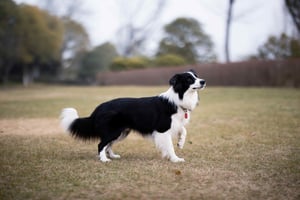Crate training is an important part of pet ownership and it’s especially important for those living...
How to Crate Train a Puppy with Separation Anxiety
Crate training a puppy with separation anxiety can be a challenging, yet rewarding process. It requires patience, consistency, and positive reinforcement. With the right techniques and tools, you can train your puppy to feel comfortable being in their crate and reduce their anxiety when separated from you. This article will provide you with an overview of how to crate train a puppy with separation anxiety and how to best manage the process.
The Benefits of Crate Training
Crate training your puppy can be incredibly beneficial. It can help them learn to control their bladder and bowels, reduce destructive behaviour, and provide them with a safe, secure space they can retreat to when they feel overwhelmed or anxious.
Crate training is also great for puppies with separation anxiety as it can help them to feel safe and secure when left alone. The crate can act as a ‘den’, allowing them to retreat to a familiar place when they feel overwhelmed or anxious.
It is important to note that crate training should not be used as a punishment or as a way to isolate your puppy from the rest of the family. It should be used as a positive tool to help them learn and grow.
What You'll Need
Before you begin crate training your puppy with separation anxiety, there are a few items you will need:
- A crate: Choose a crate that is large enough for your puppy to stand up and turn around in, but not so large that they can use one end as a bathroom.
- Toys: Choose toys that your puppy can play with on their own and that will keep them entertained while in the crate.
- Treats: Choose treats that your puppy loves and that you can use to reward them for good behaviour.
- A bed: Choose a bed that is comfortable for your puppy and that they can use to sleep in the crate.
Introducing Your Puppy to the Crate
Once you have the items you need, you can begin introducing your puppy to the crate. Start by placing the crate in an area of your home where your puppy feels comfortable and safe. Place toys and treats inside the crate and encourage your puppy to go inside.
You can also try feeding your puppy their meals inside the crate. This will help them to associate the crate with positive experiences. Once they are comfortable going inside the crate, you can begin closing the door for short periods of time.
Start by closing the door for a few seconds and then gradually increase the amount of time you leave the door closed. Be sure to reward your puppy with treats and praise when they stay in the crate for longer periods of time.
If your puppy begins to bark or whine, remain calm and do not let them out of the crate. Wait until they are quiet and then you can open the door and reward them with treats and praise.
Managing Separation Anxiety
Once your puppy is comfortable being in the crate, you can begin to leave them alone for short periods of time. Start by leaving them alone for a few minutes and gradually increase the amount of time you are away.
When you leave, be sure to give your puppy a toy or treat to keep them occupied. You can also try leaving the TV or radio on to provide some background noise.
If your puppy has a strong reaction to being left alone, there are a few things you can do to help manage their anxiety. You can try leaving a piece of your clothing in the crate with them or playing calming music. You can also try using a pheromone spray or plug-in to help reduce their anxiety.
It is also important to create a consistent schedule for your puppy. This will help them to feel secure and will make it easier for them to adjust to being left alone.
Conclusion
Crate training your puppy with separation anxiety can be a challenging, yet rewarding process. With patience, consistency, and positive reinforcement, you can help your puppy to feel comfortable and secure in their crate. By following the steps outlined in this article, you can create a safe and secure environment for your puppy and help manage their separation anxiety.



